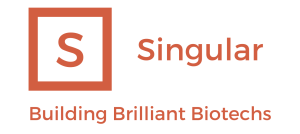The STAR interview method
Advice from a biotech interviewer
In Demystifying the Non-Technical Interview, I discussed the three main types of interview questions you will encounter, and what I will be looking for in your answer.
Understanding what I might ask you is only half the preparation picture, though. Next is to understand how to answer those questions.
What am I looking for?
First, be aware that I’m not just listening for your actual answer to my question.
I’m also looking for evidence that you are developing, that you want to learn, and that you harness your experiences to improve your performance – in short, I’m looking for indications of a growth mindset.
Preparation is key
I am going to assume that you have, at some point, googled how to prepare for an interview.
If you found yourself drowning in a sea of acronyms like PARADE, CAR, SMART CAR, SOAR, PAR, and STAR, don’t worry. All these frameworks are built on a similar premise. Picking any one of them to work with to prepare for your interview will be better than doing no preparation at all.
Interview question models
All these question-answer models are built around the idea that you describe a challenge you faced, talk through what you did, and then summarise the outcome.
When I teach interviewing skills to hiring managers, I introduce them to a couple of commonly used interview question frameworks: SOAR and STAR.
Since, as I said, all these models are similar, I am going to concentrate on the STAR method here.
The STAR technique
The acronym stands for: Situation, Task, Activity, Result.
When you’re preparing your answers, whether it’s to a competency, behavioural, or situational question , you can use the STAR model to structure your answer.
When I ask you to describe a time when <insert situation>, this is a cue for you to answer using the STAR method, confident that you are including the elements I am looking for.
SITUATION
- Briefly set the scene for my benefit.
This is not the time for you to launch into a convoluted dissertation of the entire history of the history of the situation! I want a quick introduction that will give me some context to your answer. One or two sentences here is sufficient.
TASK
- Describe what was required, either of you, the team, or the project/situation.
Again, don’t go into unnecessary detail. I don’t need to understand the light absorption efficiency of fluorescein isothiocyanate (yes, I googled that) in flow cytometry. I only need to understand why YOU needed to know that.
Don’t spend time on highly technical details in a non-technical interview. I want you to explain that you were, for example, tasked with improving flow cytometry data consistency within the team, and why.
ACTION
- What did you do, and why?
You will probably find yourself making technical references in this part of your answer. Remember that this is a non-technical interview. If it’s necessary for me to understand that you looked at fluorescence spillover and compensation controls (trust me, it won’t be!) make it brief and easy for me as a lay person to understand.
What I am interested in is the approach you took. Did you have to manage conflict? Did this cause ill feelings in the team? Was it a solo effort or were you collaborating with a team to resolve it? Did you have to reach out to external experts? Did you have to review training and competency? If so, how did you tackle that? Were you the internal expert? Did you conduct a data review?
I do want specifics, but I want the specifics about what you did, not the associated scientific or technical intricacies of flow cytometry.
RESULT
- What was the outcome?
When it comes to the outcome, I am not marking you down for getting something wrong, or even if the whole thing ended up being a disaster. I want to know that you understand how your own actions affected the situation.
Don’t be tempted to paint yourself in a glowing light of perfection; I want to see that you have the self-awareness and humility to recognise how you personally impacted the situation, both positively and negatively.
STARRS
I will be asking supplemental questions about your answer, probing to understand what you learnt, how/if you have benefitted from that learning, and in what way.
If you want to really impress, you could include these things in your initial answer. Try adding two more words to the STAR framework: Reflect and Strengthen (STARRS)
Consider if you were effective, what you could have done differently, what new skill/knowledge you take away from it, and how you have since applied that new understanding.
My role
I am there to help you. If, when under the pressure of the interview, you forget your way, don’t worry. On your side of the interview process, the STAR method is useful preparation. On my side of the process, it’s a tool that I use every day. You don’t have to remember it – I do!
My goal is to evaluate if you’re a fit for the job. It’s in my interest to guide you through my questions so you can give me sufficient insight to you as a candidate for the role. An interview isn’t an opportunity for me to find a ‘gotcha’ moment. It would make my day if you were the successful candidate. I am trying to help you show me why you are that candidate.
 Don’t stress
Don’t stress
I’m trying to qualify you for the role, not disqualify you for it. You are human, you make mistakes. Me too. If we can show how we grow and learn from them, that’s a win.
~Fiona







Leave A Comment